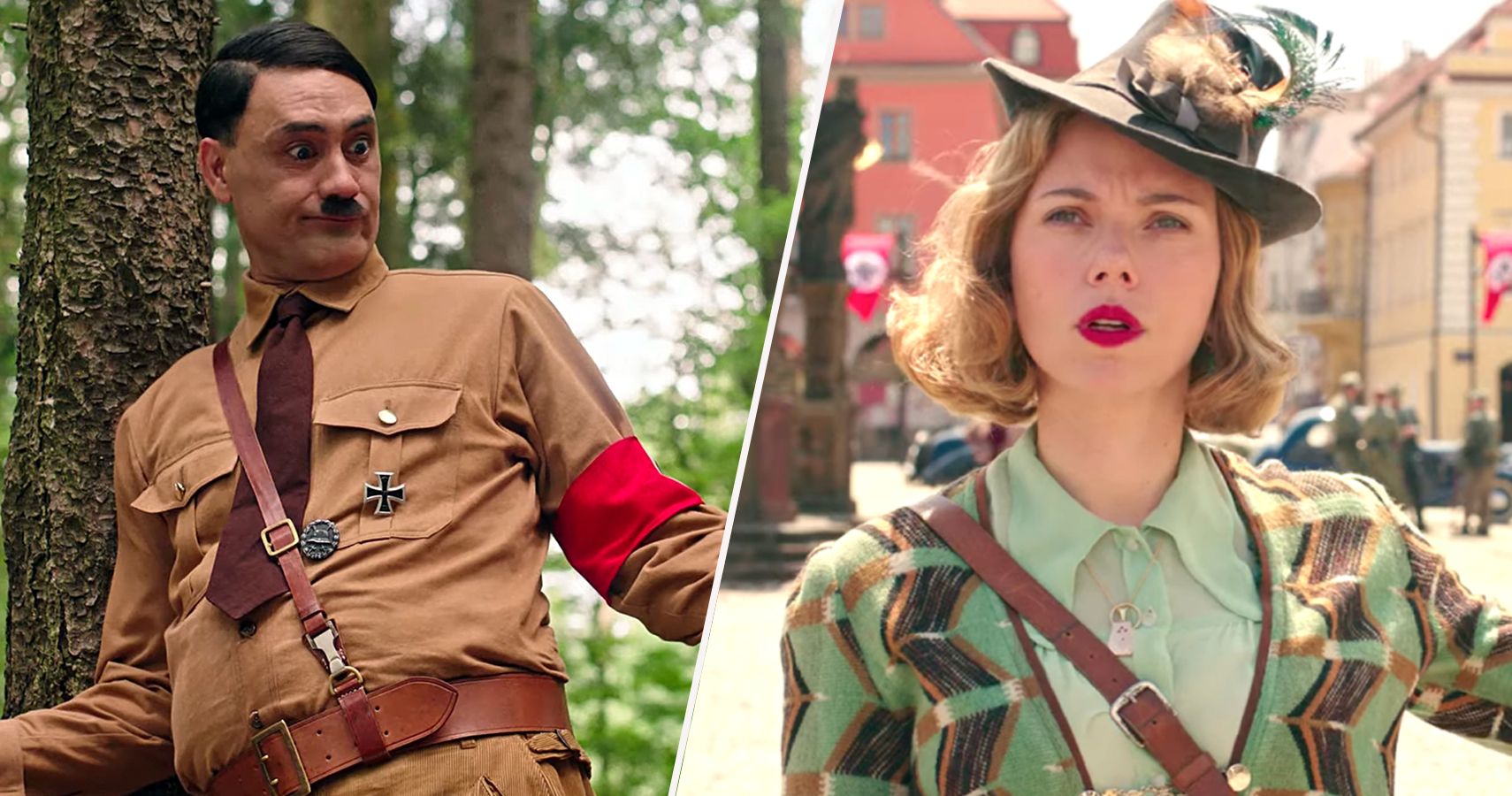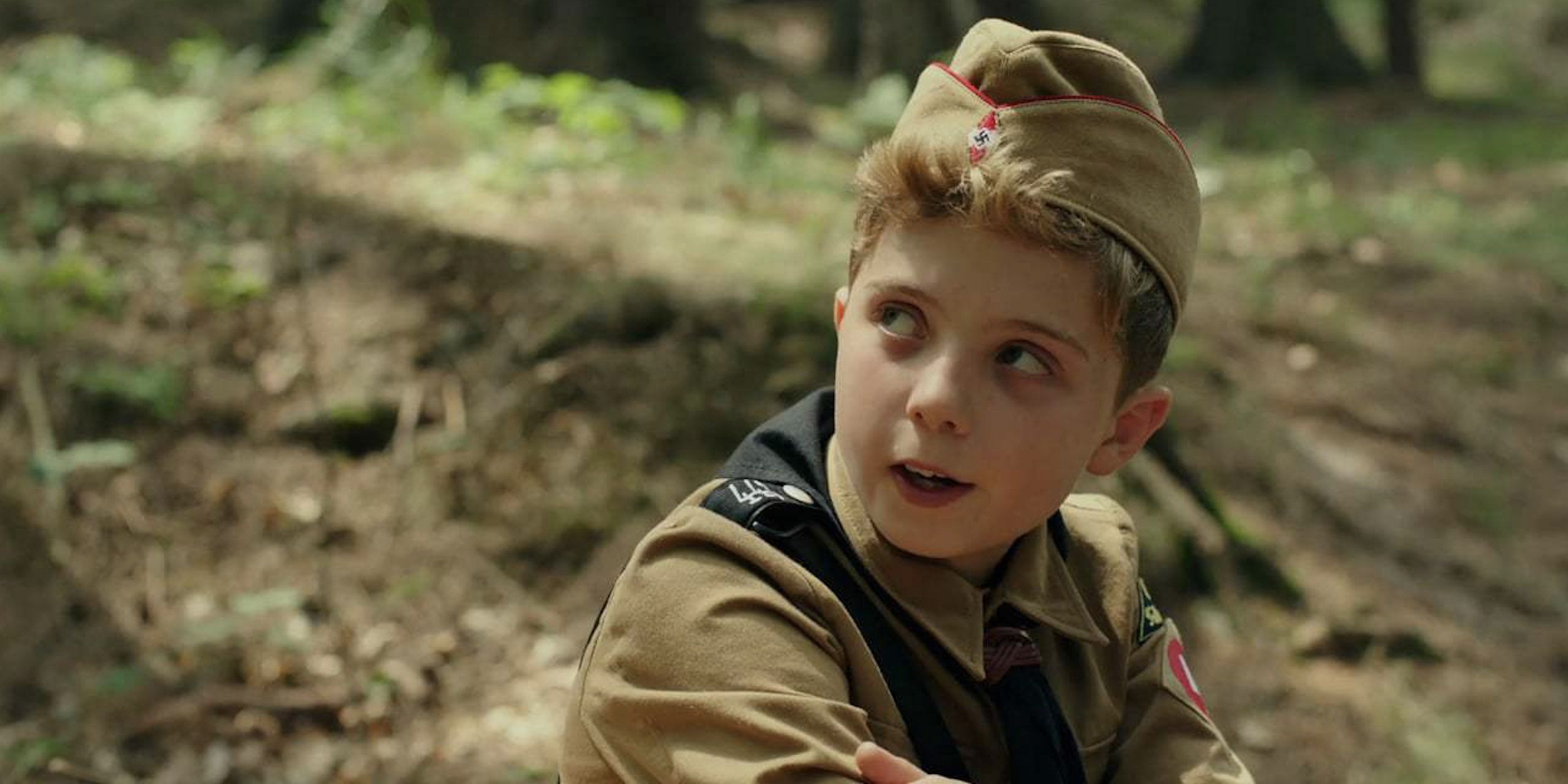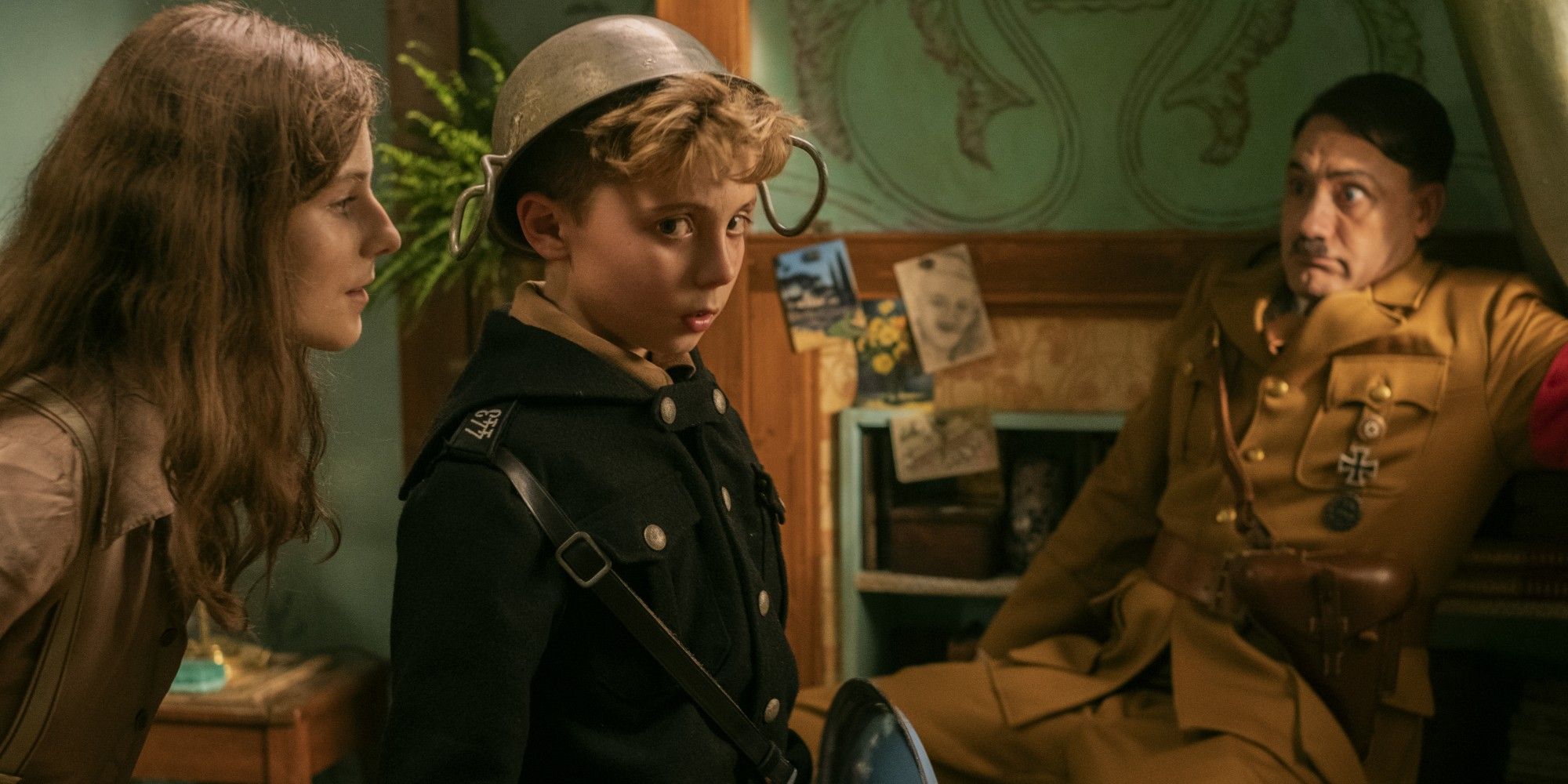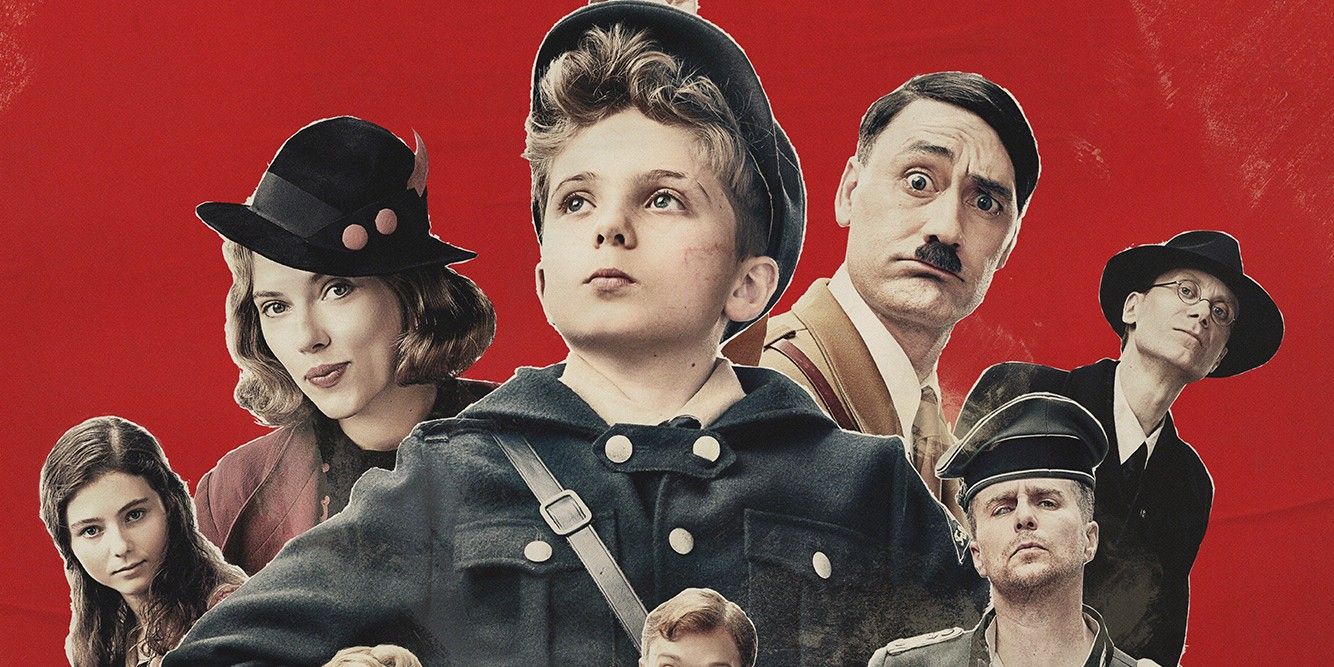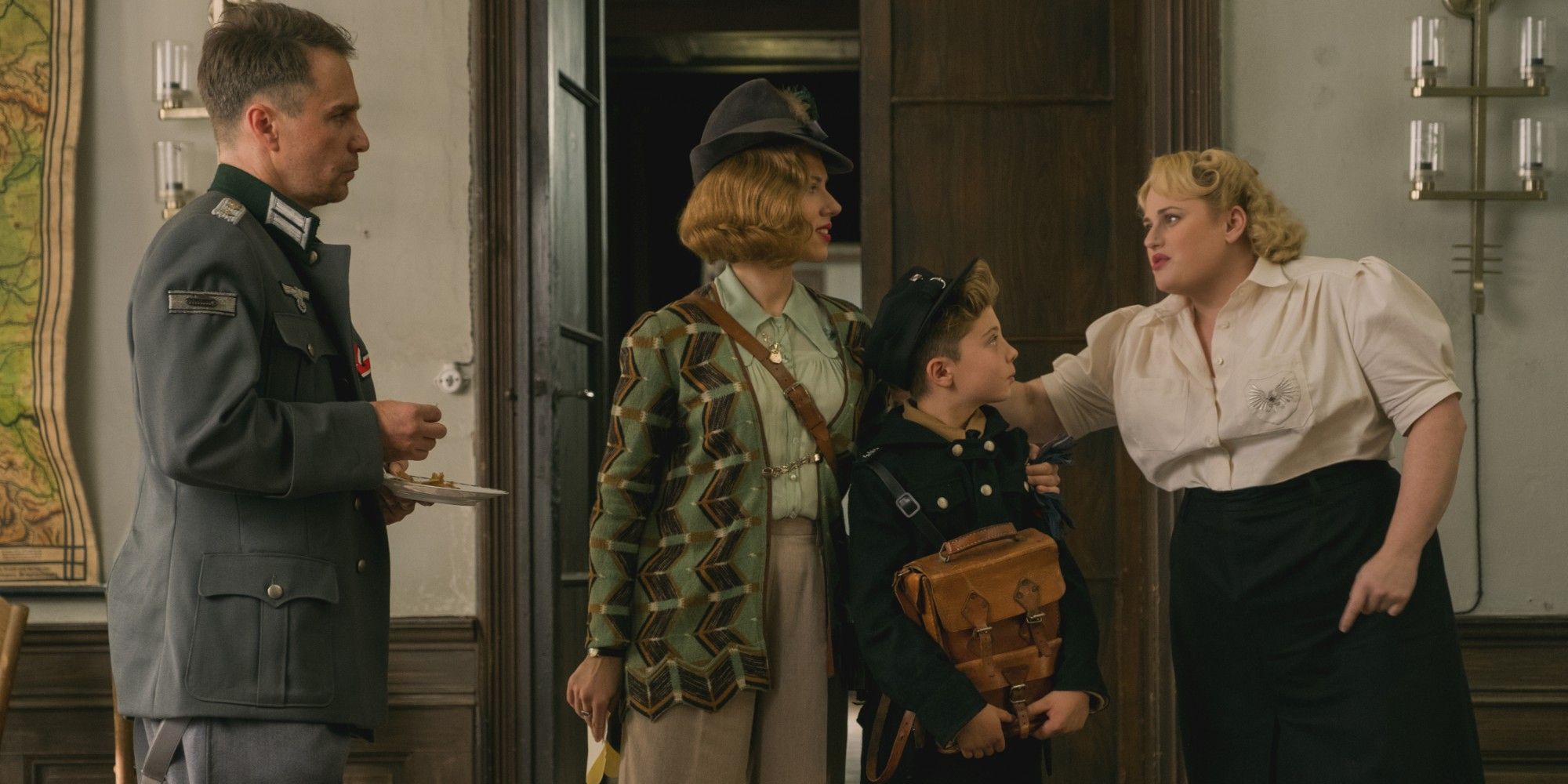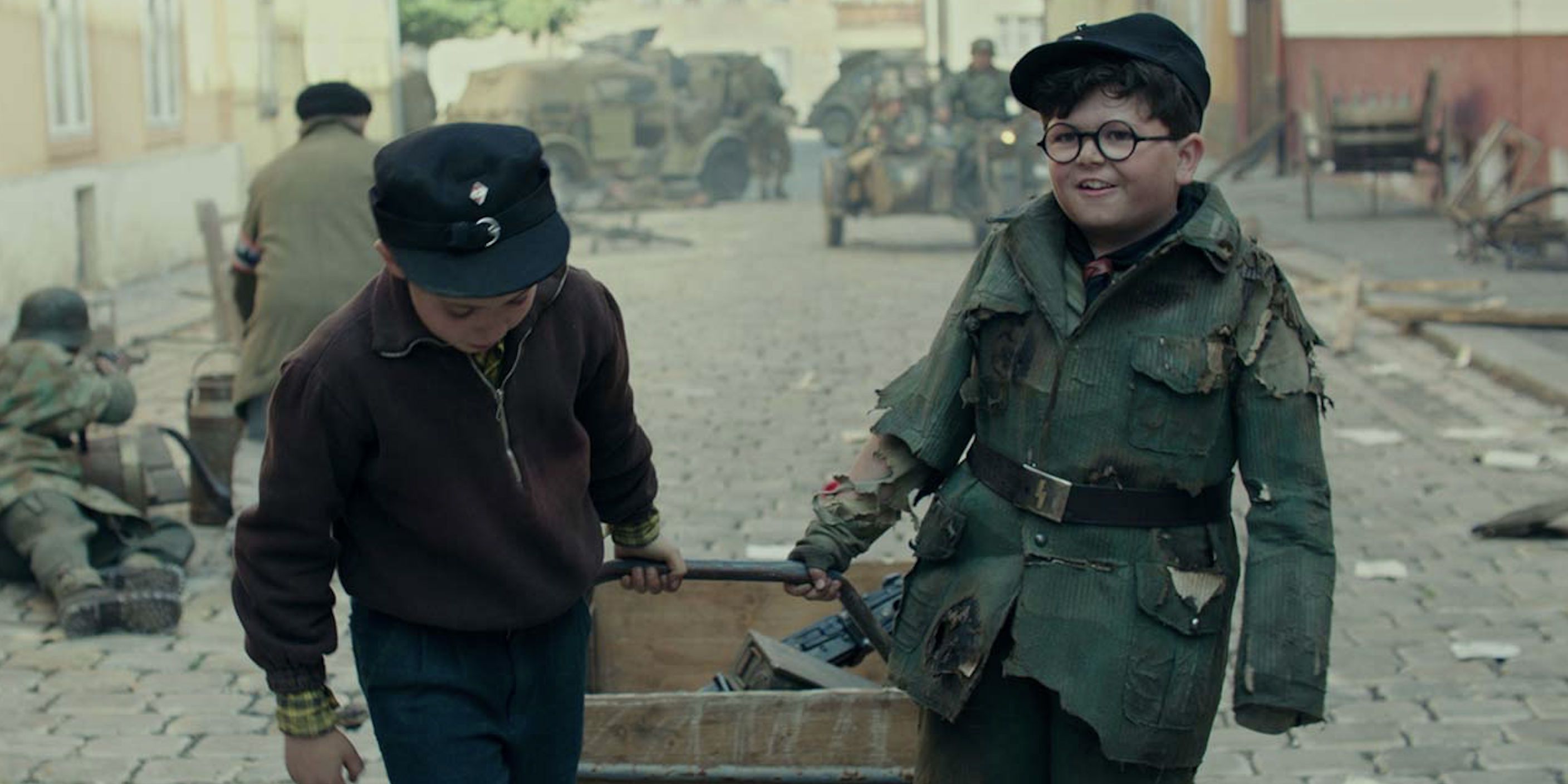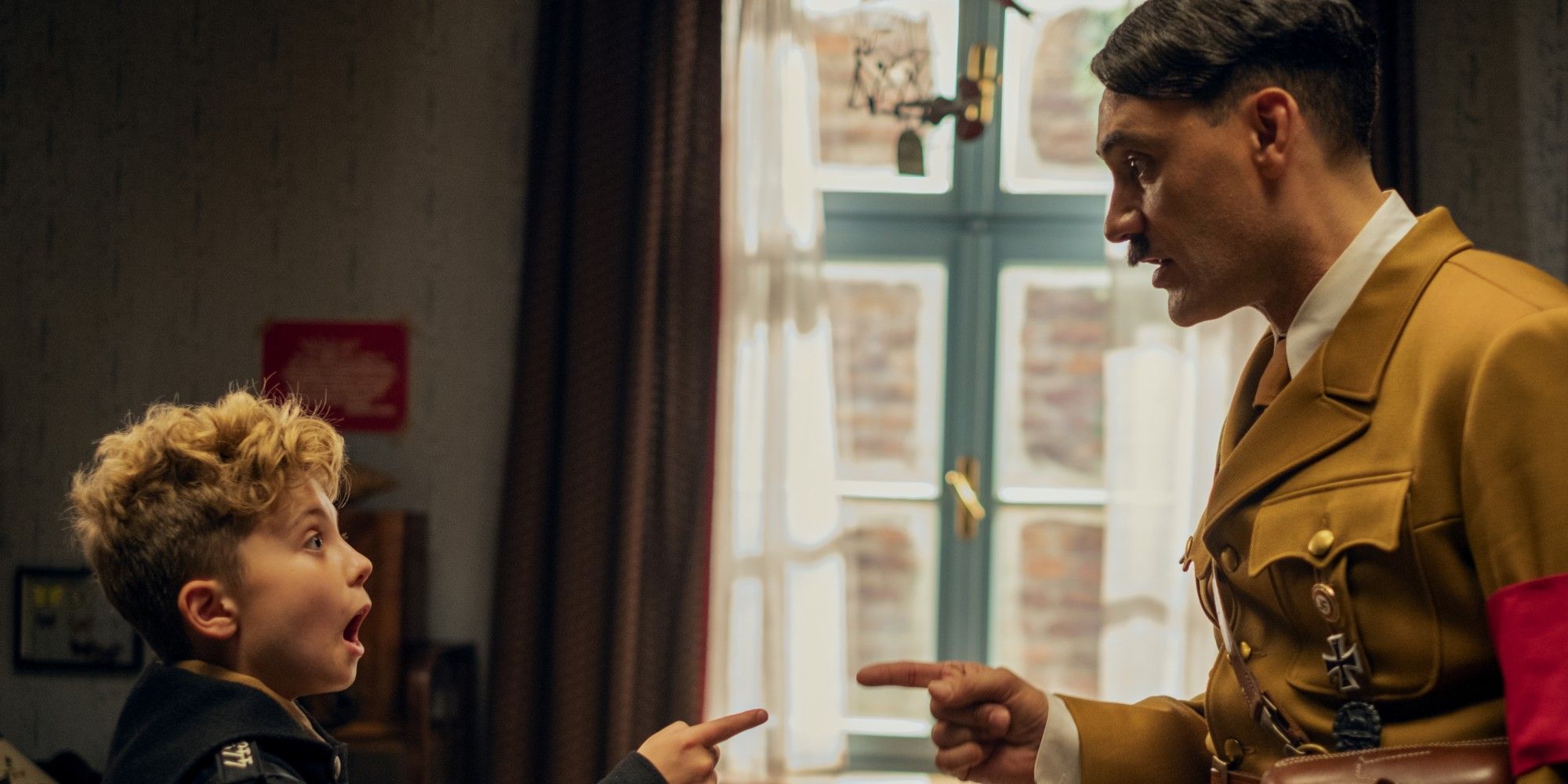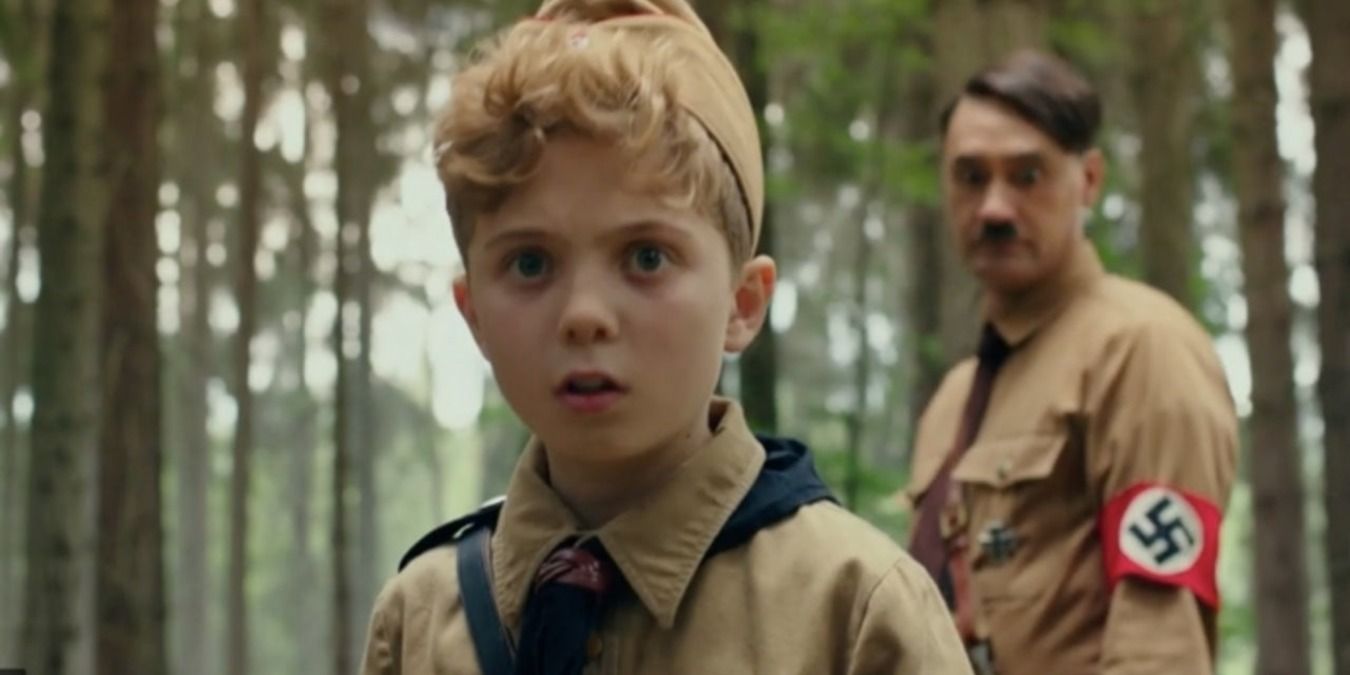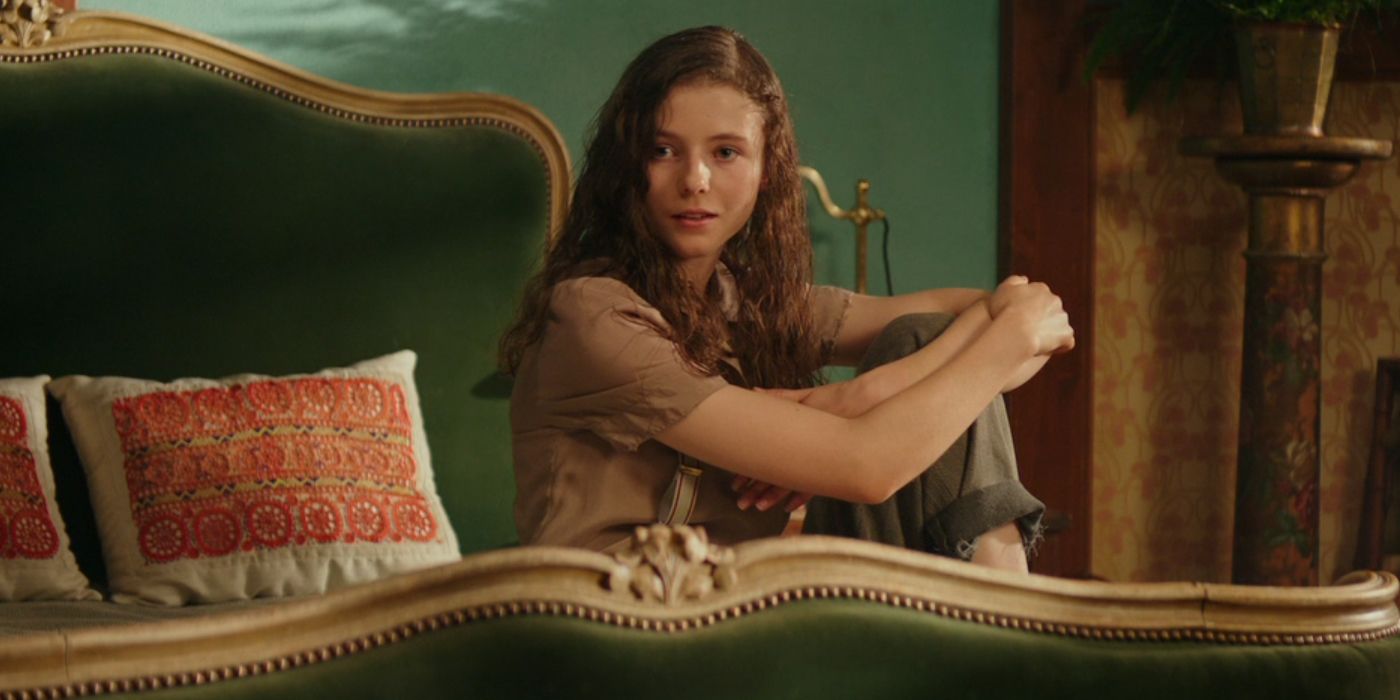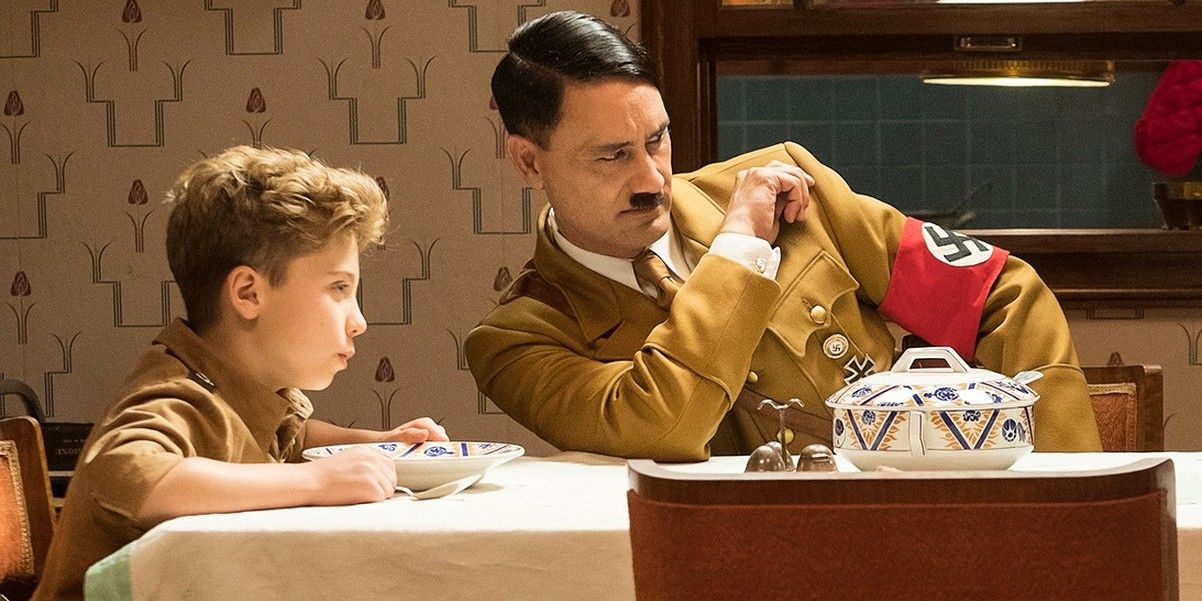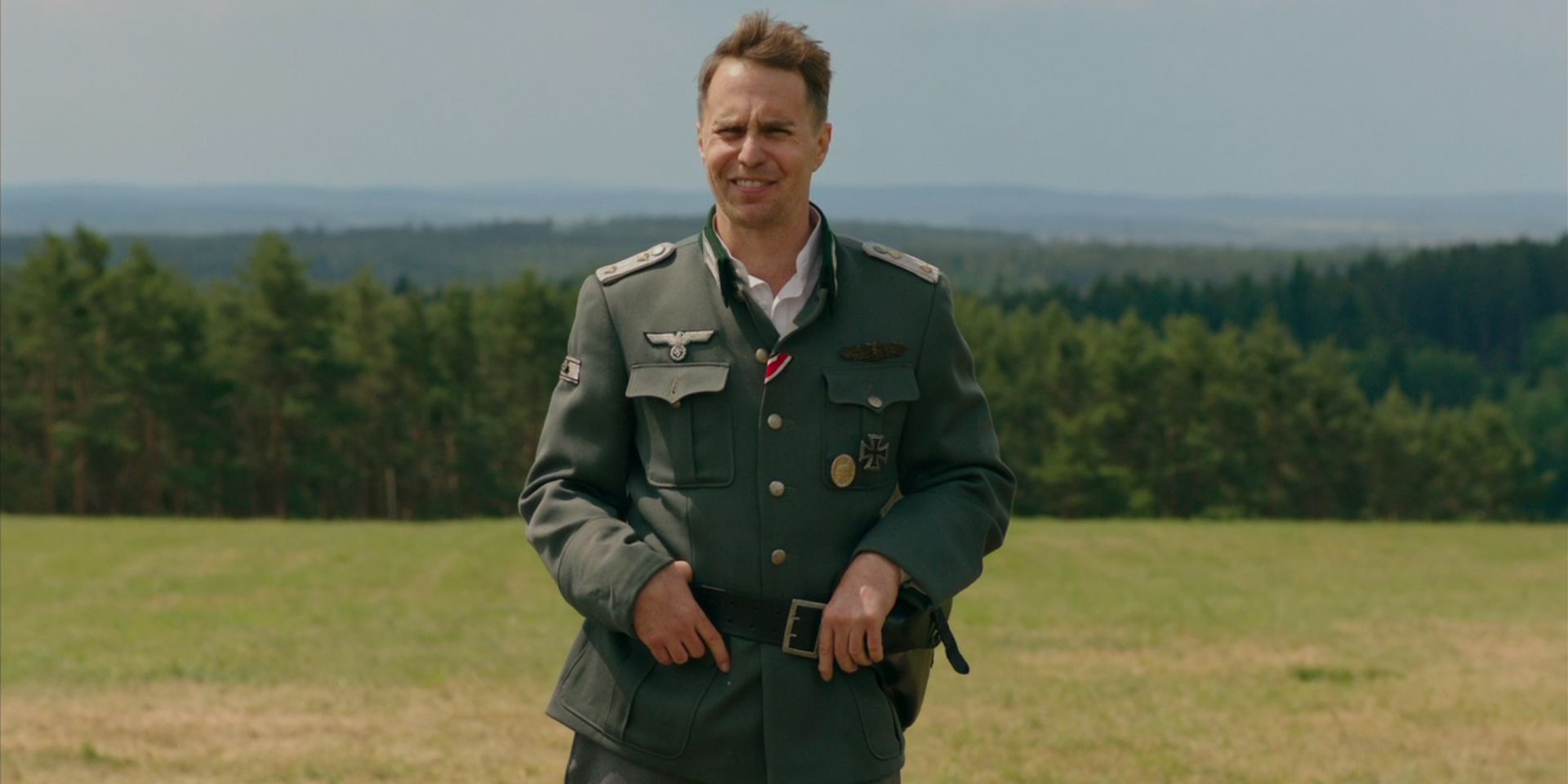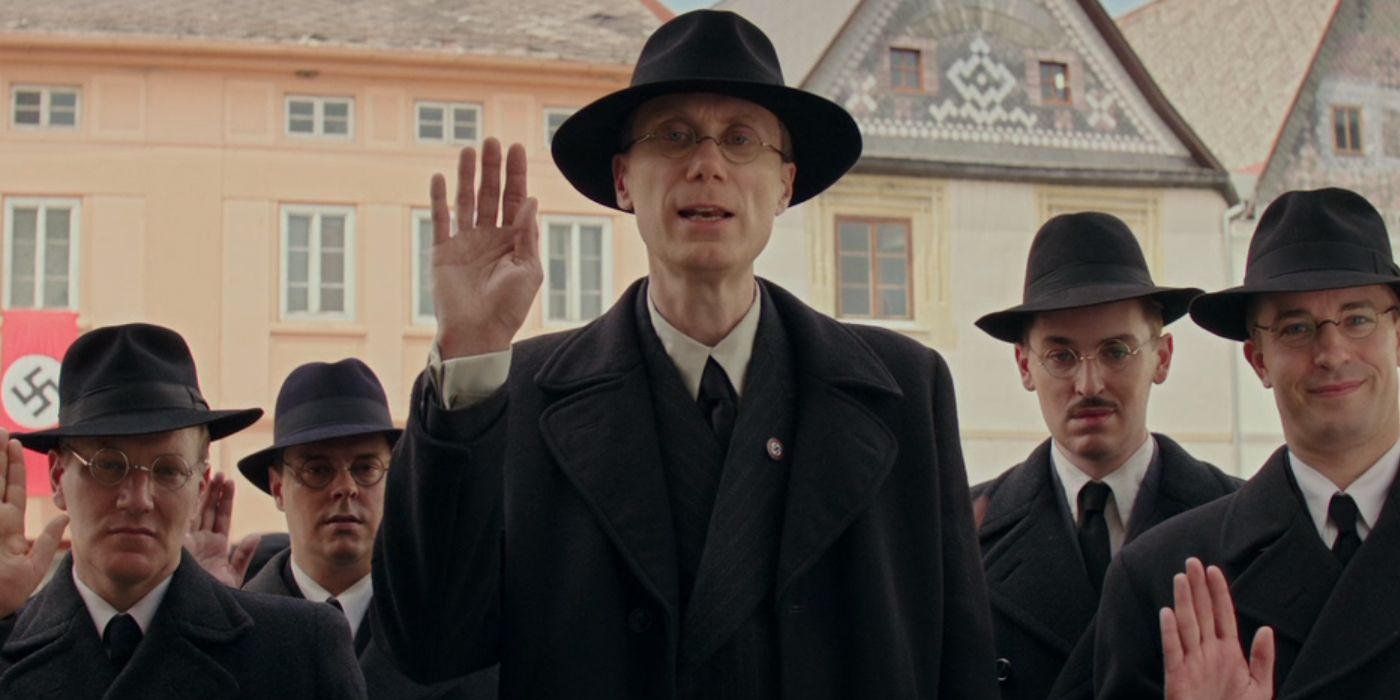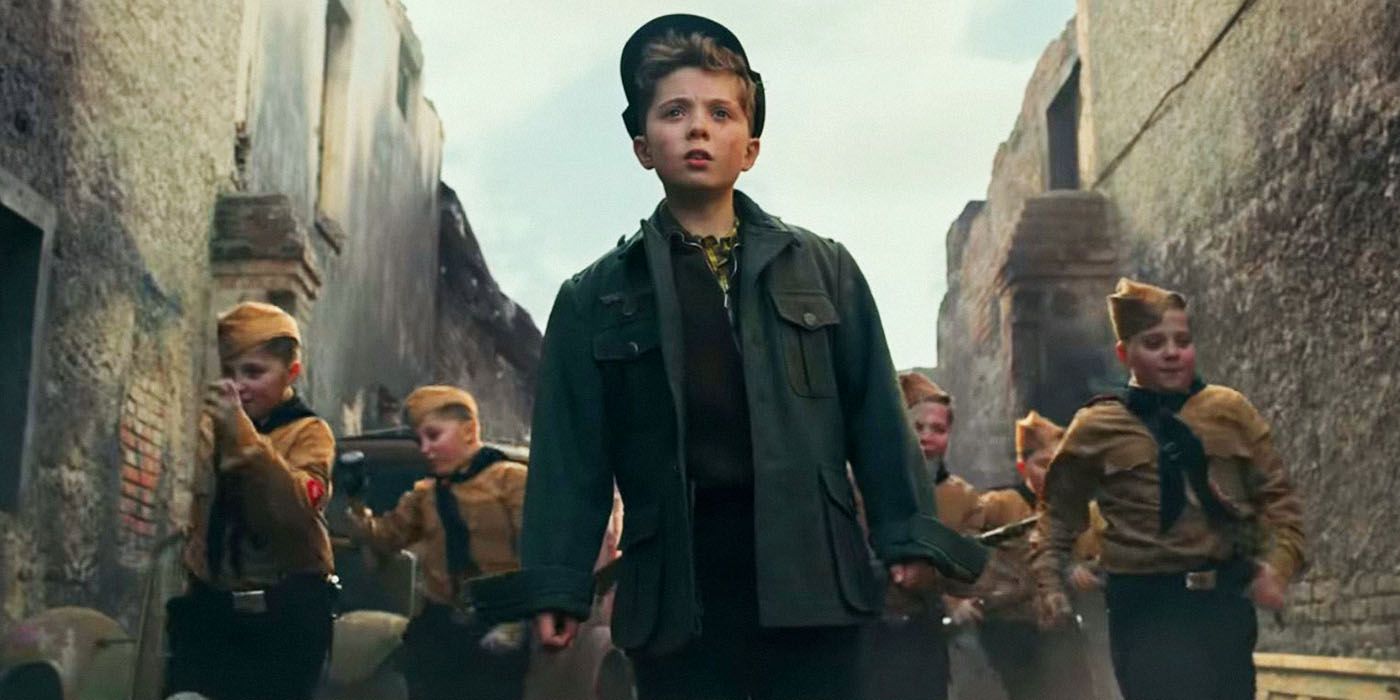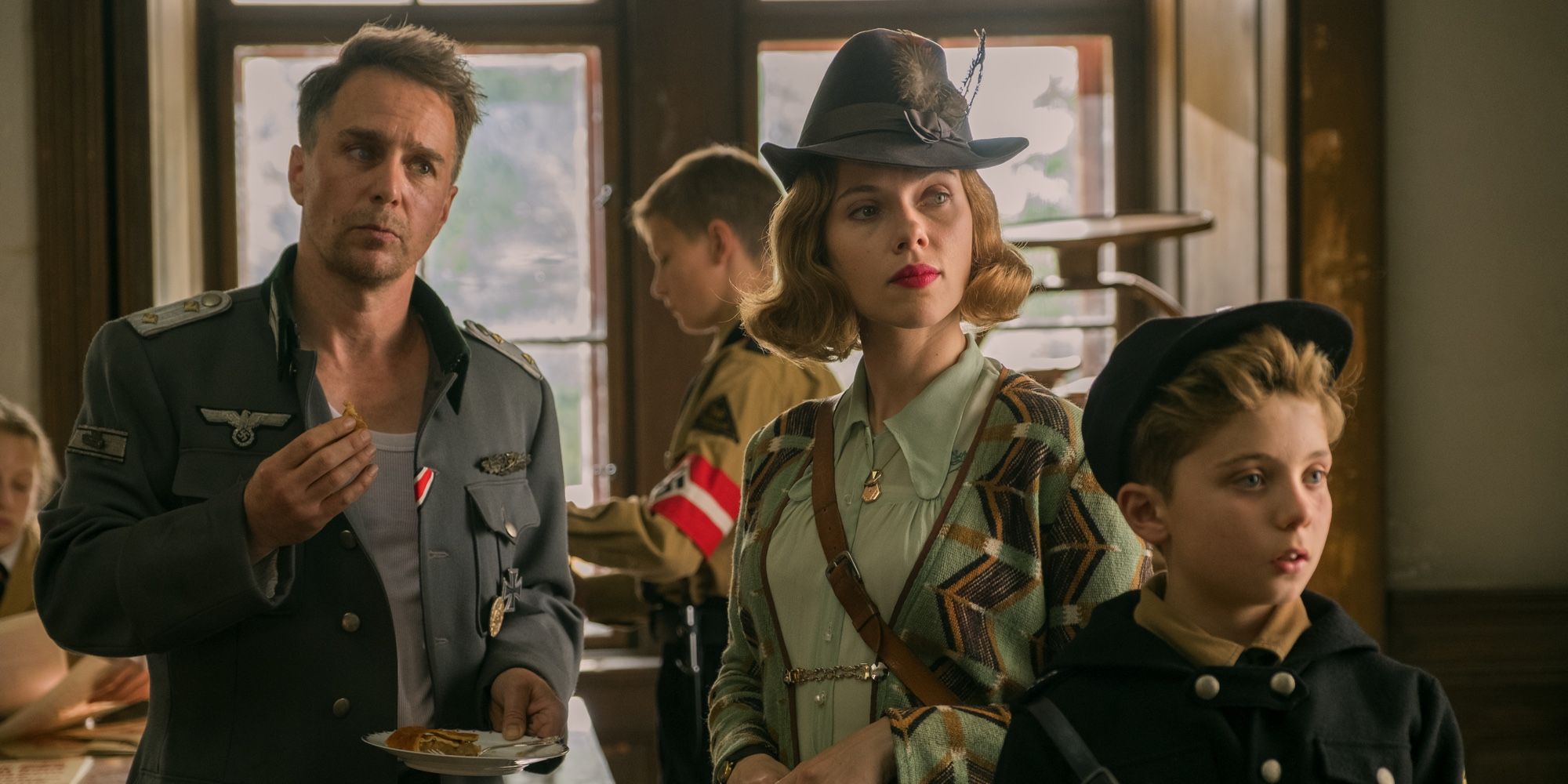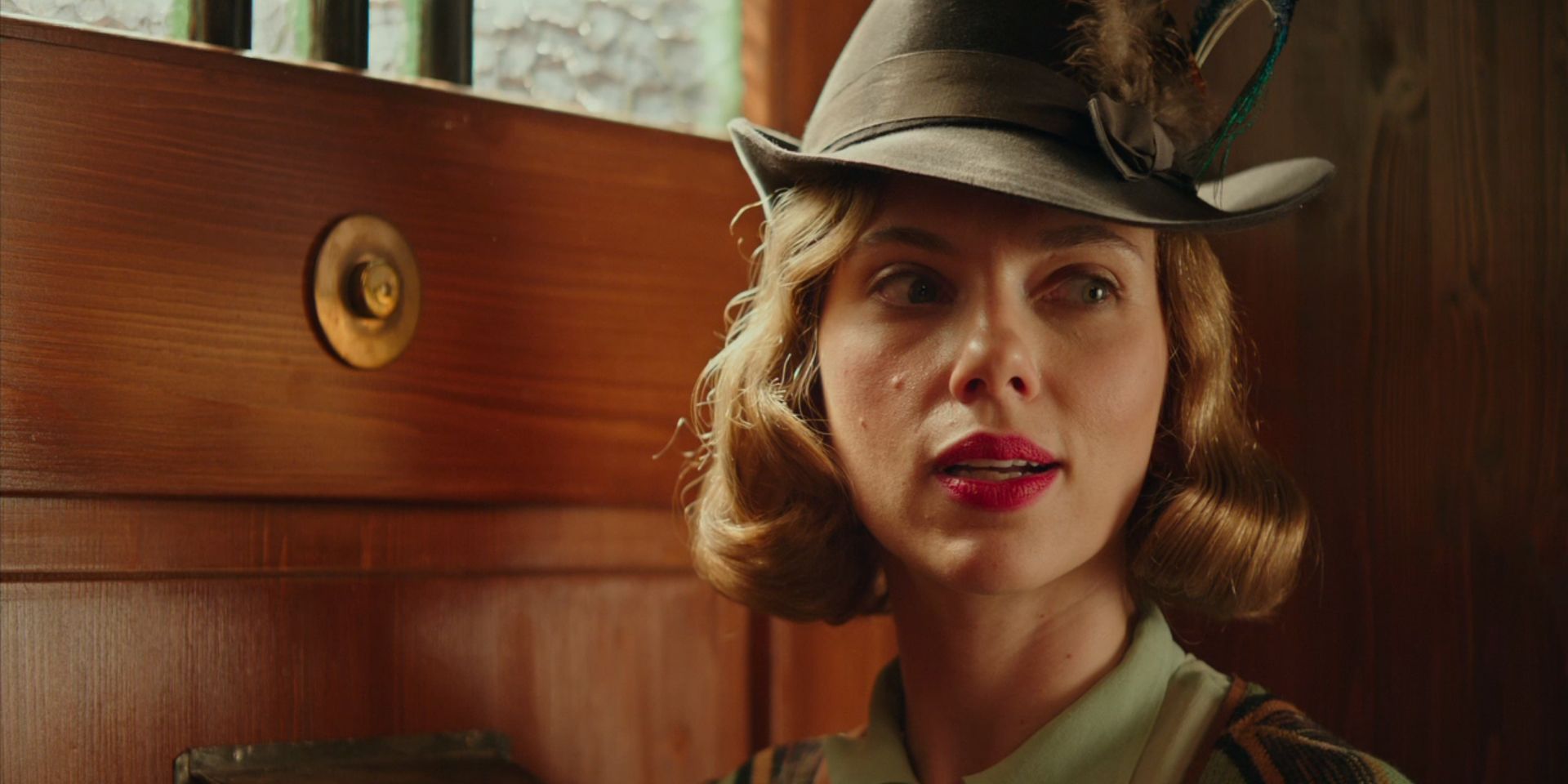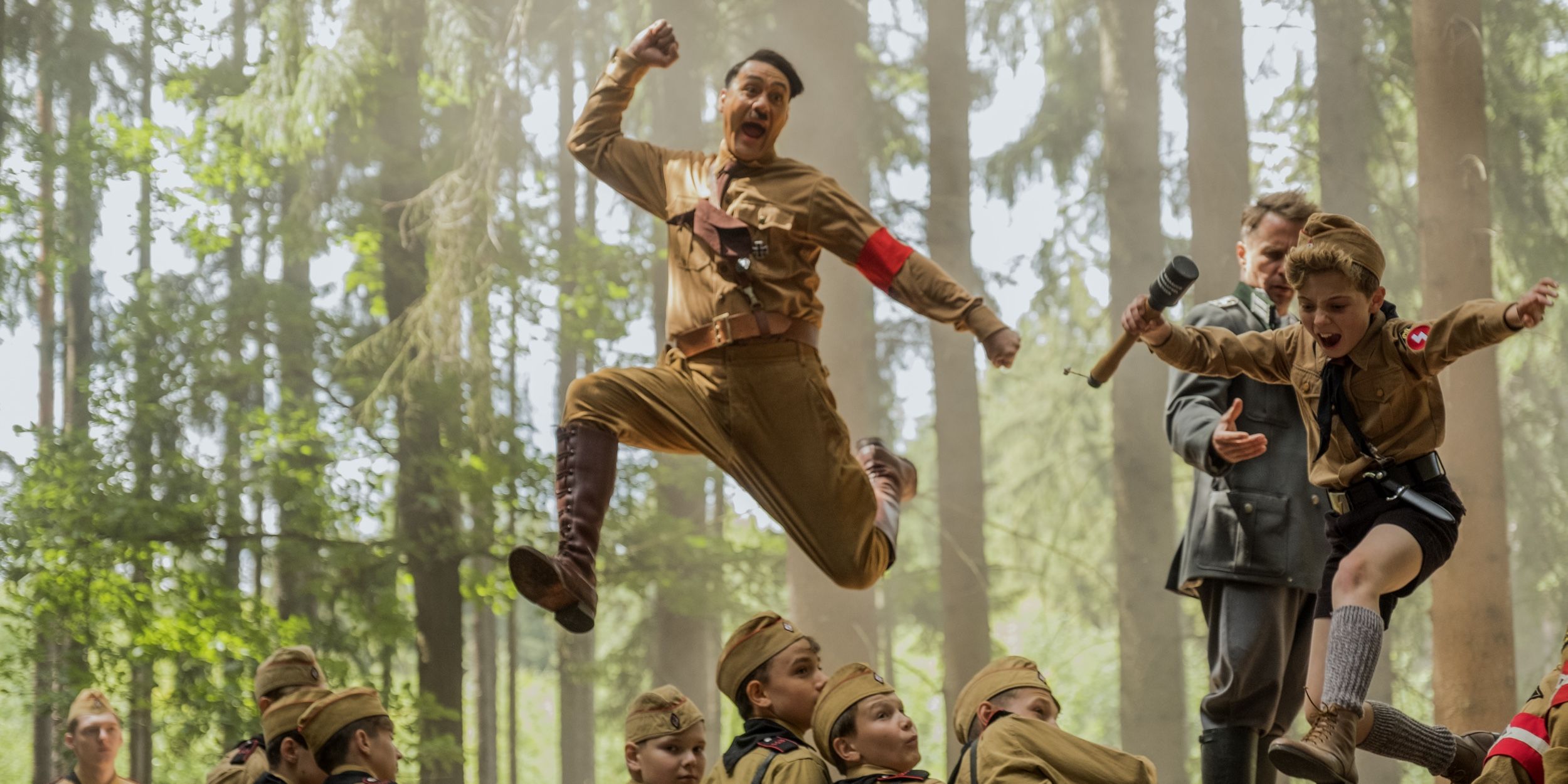Updated by Colin McCormick on February 6, 2020: The discussion for Jojo Rabbit shows no signs of dying down even months after its release. Though a controversial film, many continue to praise it as one of the most important films of 2019 and another major win for Taika Waititi. With Jojo Rabbit competing for the Oscar for Best Picture, we thought it would be a good time to dive further into the remarkable journey this bold film has taken to reach the big screen.
Without a doubt, Jojo Rabbit has been one of the most talked-about movies of this year's awards season. The Taika Waititi film has been nominated for several Oscars, including Best Picture, even though it has had a somewhat divisive reaction among critics.
The film follows a young German boy who is a loyal follower of the Nazi Party during World War II. His life is thrown upside down when he discovers a young Jewish girl living in his attic. Such a controversial topic makes for a fascinating film, and the story behind the making of the film is fascinating itself. Here are some of the things you never knew about the making of Jojo Rabbit.
Casting Jojo
One of the most essential aspects of the film was the casting of Jojo himself. If Waititi wasn't able to find the right actor, the whole film would suffer. Luckily, they found an amazing young talent in Roman Griffin Davis, who brings so much humor, heart and depth to the complex character.
According to Davis, he was actually going to an audition for Ford v Ferrari when he found out about the role. After meeting with some casting directors, Davis had his first audition with Waititi over video call which kept freezing. Despite the awkward audition, Waititi decided he found the right kid for the job.
Based On A Novel
Some people were confused about the film's nomination for Best Adapted Screenplay as many assumed this was an original story only Taika Waititi could come up with. The movie is actually based on the novel "Caging Skies" by Christine Leunens.
The novel centers on a young Hitler Youth who discovers a Jewish girl being hidden in his house by his mother. However, the original story is quite dark and lacks the comedic tone of the film. Waititi decided to inject his own voice to tell the story in a much more unique way.
Long Development
As one can imagine with a comedy about a Hitler Youth, Jojo Rabbit did not have a quick journey to the big screen. However, much of the long development process was due to Waititi's busy schedule rather than the controversy surrounding the film.
Waititi originally wrote Jojo Rabbit following the release of his second film, Boy. However, he then went on to make What We Do in the Shadows, The Hunt for the Wilderpeople and Thor: Ragnarok before returning to this project and selling it to Fox Searchlight.
A Fashionable Germany
In keeping with the lighter tone of the film, the German village in which the film is set is vibrant and bright. This is actually something that came out of Waititi's research into Germany at this time. The country was very fashionable and ostentatious even at the time of war. This continued even as Germany began losing the war.
Waititi saw this as a way of distinguishing the film from other WWII films set in Germany that depicted it as a grey and dreary place. He also liked the idea of Germans putting on a false façade as everything crumbled around them.
A Youthful Feel
While the colorful and fashionable look of the film might be based on historical facts, there is a certain childish whimsy to the entire film. Such an approach might seem inappropriate for a movie about Nazis, but it is meant to be seen through the eyes of the 10-year-old protagonist.
However, Waititi also wanted to maintain a younger tone so as to allow the film to be accessible to a younger audience. Despite some intense scenes, he felt there were important lessons for modern children to take from this story.
Playing Hitler
One of the most memorable aspects of the film is Jojo's imaginary friend Adolf Hitler, who is played by Waititi himself. The character is meant to show the terrifying figure in the eyes of a small child, which makes him look absolutely foolish.
According to Waititi, Fox Searchlight requested he play the part when they bought the script. Though he acknowledges that directing a film while dressed like Hitler was not always easy, he thought the idea of a Polynesian Jewish man playing Hitler was the perfect insult to Hitler himself.
Jojo's Version Of Hitler
Waititi was well aware of the risks of portraying Hitler in such a goofy way as it might take away from the evil the real Adolf Hitler represented. However, he also maintained that this depiction of Hitler was never meant to be accurate to the real figure.
The Hitler in the movie is Jojo's imaginary friend thus he is the Hitler that a young boy would imagine. He also pointed out that Hitler is an amalgamation of different people in his life, such as his father, the Nazis in town and even his friend Yorki.
Building The Elsa Character
Another vital bit of casting in the film was the character of Elsa and another excellent young actor, Thomasin McKenzie, proved to be the ideal choice to play the part. McKenzie took her approach to the role very seriously, studying about the Holocaust, visiting synagogues and watching films like Schindler's List.
However, McKenzie also knew that she did not want to portray Elsa as simply a victim of this terrible time. She was a strong, independent character. Waititi also suggested she watch films like Mean Girls and Heathers in preparation to keep in mind that Elsa was once just a cool high school girl.
Plot To Kill Hitler
Many of the funniest moments of the film are Hitler's ridiculous asides as he gives horrible advice to Jojo. During one particularly memorable pep talk, Hitler mentions a plot to assassinate him by someone named Stauffenberg.
Despite Hitler's claim that he survived because he has bomb-proof legs, this was a real assassination attempt in 1944. It was carried out by members of the Nazi party who felt Hitler had taken them on the wrong path. The plot was depicted in the movie Valkyrie, which starred Tom Cruise as Stauffenberg.
Sam Rockwell's Inspiration
Sam Rockwell continues his string of wonderful performances in high-profile films with a great supporting role in Jojo Rabbit. He plays Captain Klenzendorf, the leader of the Hitler Youth. He is a former soldier who was sent home after losing his eye in battle, becoming bitter and disillusioned.
Rockwell studied many films and performances of actors playing Nazis, including Ralph Fiennes' performance in Schindler's List. However, he ultimately used Bill Murray as a major influence for the role, imagining Murray as a sad sack Nazi.
Greetings
One of the tensest scenes finds Gestapo officers (led by Stephen Merchant) searching Jojo's home. However, the scene is also hilarious with the Gestapo doing little more than greeting one another with the "Heil Hitler" salute which is made 31 times in the scene.
Waititi thought this would not only be a funny moment but also work to highlight how childish and silly the Nazi Party was. Seeing these grown men who claim to be members of a master race do their dumb greeting over and over just makes them look like a bunch of idiots.
Stranger Than Fiction
The film seems to take a lot of pleasure in making the Nazi Party and anyone who believes in their cause look like fools. However, you might be surprised how little the film exaggerates the stupidity of the Nazis.
Waititi pointed out that a lot of the things that might have seemed over the top in the film are actually taken from actual Nazi practices. They did dress kids up as robots to collect metal, they did teach children that Jewish people had horns on their heads, and they did recruit the women and children to fight when Germany was invaded.
Love Letter
Along with being a movie about this period in time, Waititi also had a more intimate and personal influence on the film. He explained that the film is a love letter to single parents, like his own mother, who do all they can to protect their children.
This is represented in Jojo's mother, played by Scarlett Johansson. She is funny, kind and always caring even though she disagrees with all the hate her son is spouting. However, she also doesn't steer him away from acting this way because she knows being a Nazi makes him a little safer.
Rosie's Death Scene
One of the most powerful and devastating moments in the film is the moment Jojo finds his mother Rosie (Scarlett Johansson) hanging in the gallows. The reveal is a gut-punch for the audience as all we see are her red shoes which instantly identify her.
According to Waititi, this was always how he had envisioned the scene and never considered showing her actually body. He felt that this was a moment between the mother and son and the audience did not have the right to see her as Jojo saw her.
Repurposing Hate
While making the film in Germany, some of the studios that were used were studios that had been taken over by the Nazis during the war and used to make propaganda films. Waititi acknowledges that this and portraying Hitler gave an uncomfortable feeling at first, but he eventually felt there was power in repurposing the history of hate.
Many have criticized the film for treating this subject too lightly. However, Waititi asserts that using comedy as a weapon against the Nazis and anyone who shares their beliefs is more powerful than simply condemning them. He sought to use this horrible history to tell a story of love and understanding.

